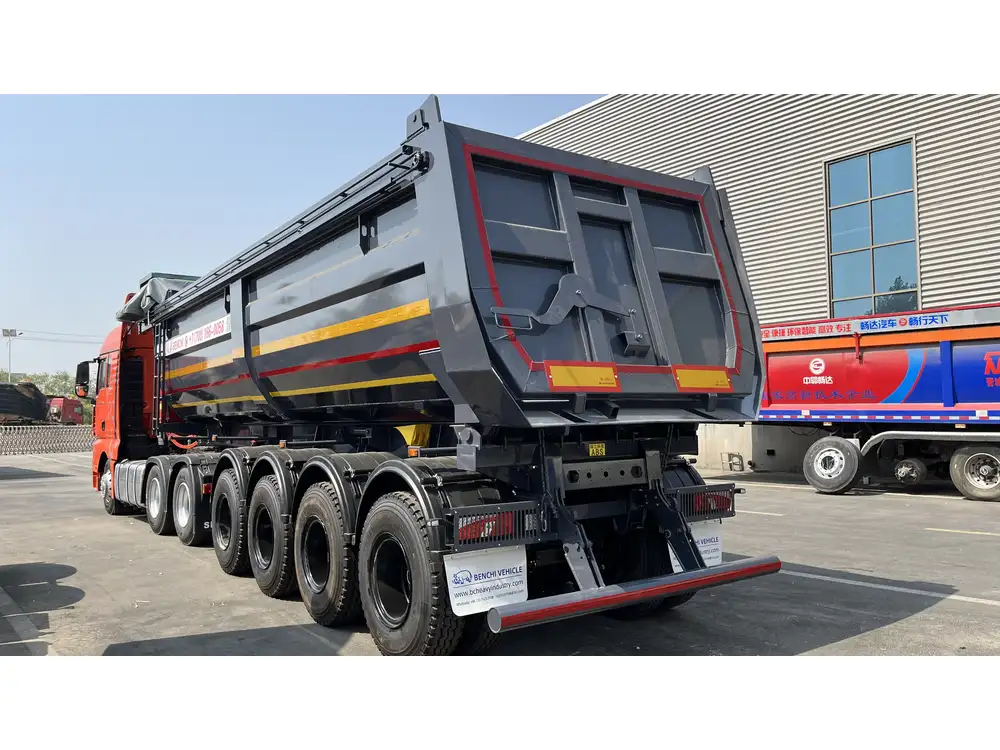When evaluating the logistics, transportation, and general use of a 48 flatbed trailer, understanding its weight is imperative. A flatbed trailer stands as a versatile solution for heavy hauling, providing an unencumbered surface area for various types of cargo. The weight of a 48 flatbed trailer varies based on several factors, and this article dives deeply into these elements to provide you with comprehensive insights.
Table of Contents
- Introduction: The Importance of Knowing Trailer Weights
- Standard Weights of 48 Flatbed Trailers
- Factors Influencing the Weight of a Flatbed Trailer
- 3.1 Material Composition
- 3.2 Trailer Design
- 3.3 Accessories and Features
- Weight Regulations and Compliance
- Weight Distribution and Limits
- Practical Considerations for Users
- Conclusion
1. Introduction: The Importance of Knowing Trailer Weights
The weight of a semi-trailer, including flatbeds, plays a crucial role in determining permissible cargo loads, trailer towing performance, and compliance with federal and state regulations. Understanding how much a 48 flatbed trailer weighs is not merely an academic inquiry; it’s fundamental to safe and efficient operations in the logistics and transportation sectors.

2. Standard Weights of 48 Flatbed Trailers
In general, the average weight of a 48-foot flatbed trailer ranges between 10,000 to 12,000 pounds (4,536 to 5,443 kg). However, this weight can fluctuate based on various factors, including the construction materials and design specifics tailored to different applications and industries.
| Type of Flatbed Trailer | Average Weight (lbs) | Average Weight (kg) |
|---|---|---|
| Traditional Steel Flatbed | 10,000 – 12,000 | 4,536 – 5,443 |
| Aluminum Flatbed | 8,000 – 10,000 | 3,628 – 4,536 |
| Heavy-Duty Flatbed (for specialized cargo) | 12,000 – 15,000 | 5,443 – 6,804 |
3. Factors Influencing the Weight of a Flatbed Trailer
The weight of a flatbed trailer isn’t a static figure; rather, it’s influenced by several critical factors that warrant exploration.
3.1 Material Composition
The composition of materials in trailer construction significantly impacts the overall weight. For instance:
- Steel Trailers: Known for their durability, steel trailers can be heavier, typically weighing around 10,000 to 12,000 pounds.
- Aluminum Trailers: Lighter than steel, aluminum trailers can weigh 8,000 to 10,000 pounds, making them easier to tow and more fuel-efficient.

3.2 Trailer Design
The design intricacies of a flatbed trailer can also contribute to weight variations. This includes:
- Beam Configuration: The number and type of beams used in construction; more beams can mean increased weight.
- Width and Height: Wider or taller trailers may have additional structural reinforcements, contributing to the overall weight.
3.3 Accessories and Features
Additional features such as ramps, toolboxes, and tie-down systems can add weight. Some common accessories are:
| Accessory | Weight Contribution (lbs) |
|---|---|
| Aluminum Ramps | 300 – 500 |
| Toolboxes | 200 – 400 |
| Additional Tie-Down Points | 100 – 200 |
4. Weight Regulations and Compliance
Understanding federal and state weight regulations is vital for trailer owners and operators. The Federal Highway Administration (FHWA) enforces weight limits, which are crucial for road safety and infrastructure preservation.

Weight Limit Regulations
- Federal Maximum Gross Vehicle Weight: Typically capped at 80,000 pounds for a combination vehicle, including trucks and trailers.
- State Specific Limits: Each state has its own regulations regarding the maximum load that can be carried on flatbed trucks, often varying from federal limits.
5. Weight Distribution and Limits
Proper weight distribution and understanding weight limits are crucial aspects of flatbed trailer operation. Overloading or improperly distributing cargo can lead to severe safety hazards, including trailers swaying, tipping, or causing undue strain on towing vehicles.
Load Distribution Guidelines
- Center of Gravity: Keeping the center of gravity low and centered enhances stability.
- Weight Across Axles: Distributing weight evenly across the axles helps prevent overloading and extends the lifespan of the trailer.
| Load Position | Impact on Trailing Stability |
|---|---|
| Centered Load | Optimal Stability |
| Overloaded Rear | Increased Risk of Swaying |
| Front-Heavy Load | Possible Front-End Damage |

6. Practical Considerations for Users
For operators and owners of flatbed trailers, making informed choices hinges on understanding weighing factors and regulations. Here are some practical considerations:
6.1 Choosing the Right Trailer for Your Needs
Assess your cargo types and weights to decide between steel and aluminum trailers. Consider factors such as:
- Weight Savings: If fuel efficiency is crucial, an aluminum trailer may be preferable.
- Durability Needs: For heavy-duty applications requiring robustness, a steel trailer can be a better choice.
6.2 Regular Maintenance and Weight Checks
Regularly maintaining a trailer and performing weight checks can prevent overload situations which might lead to accidents or traffic violations. Implementing a routine check-up can help in:
- Detecting any structural issues early.
- Ensuring compliance with weight regulations.

7. Conclusion
In the complex world of freight transportation and logistics, understanding the weight of a 48 flatbed trailer is essential for optimizing performance, ensuring safety, and enhancing efficiency. Various factors influence this critical parameter—from material composition to design intricacies and additional features. By being well-informed about these elements, operators can make better decisions, maintain compliance with regulations, and ultimately achieve operational success.
For any questions regarding specific trailer configurations, desired features, or additional considerations, feel free to reach out to a knowledgeable manufacturer who can provide tailored insights specific to your hauling needs.



